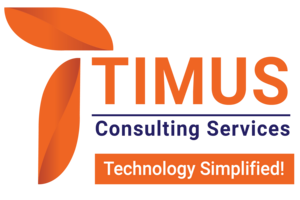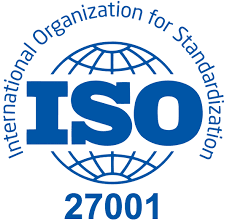IBM Cognos is a powerful Business Intelligence (BI) platform that helps organizations turn data into actionable insights. With its robust reporting capabilities, Cognos makes it easy for users to create reports, dashboards, and visualizations tailored to their business needs. If you’re just getting started with Cognos, this guide will walk you through the essential steps for creating your first Cognos report.
Step 1: Accessing Cognos
The first step to creating reports in Cognos is gaining access to the system. You will typically access Cognos through a web browser by entering your credentials. Once logged in, you will be directed to the Cognos portal where you’ll have access to a variety of tools, reports, and dashboards.
- Open a web browser and go to your organization’s Cognos URL.
- Enter your username and password to log in.
Once you’re inside, you can start exploring the reporting tools available to you.
Step 2: Choosing a Report Type
Cognos provides several report types, each tailored to different types of data and visualizations. These are the key report types you can choose from:
- List Reports: Best for displaying data in a table format, such as a simple grid of values.
- Crosstab Reports: Useful for summarizing data in a matrix format, allowing you to compare data across rows and columns.
- Chart Reports: These are graphical representations like bar charts, line charts, and pie charts that help to visualize data trends.
- Visualizations: Advanced graphical displays such as maps and gauges.
To begin creating your report, click on the New button on the homepage and select Report. Next, you’ll be prompted to choose a report type based on your needs.
Step 3: Selecting a Data Source
Cognos reports pull data from a variety of sources, such as databases, queries, or pre-defined data modules. The data source you choose depends on your organization’s data architecture and where your data resides.
- After selecting your report type, you’ll need to choose the Data Source. This could be a query, a data module, or even a database connection.
- Once you’ve selected a source, you can see the list of data items available for use in your report.
If you’re working with a pre-configured query, you’ll only need to select the necessary fields for your report. For example, if you’re creating a sales report, you might choose data items such as “Customer Name,” “Sales Amount,” and “Date of Purchase.”
Step 4: Building Your Report Layout
Once you’ve selected your data source, it’s time to start building your report layout. In Cognos, the report canvas is where you can arrange and format your data to best represent your insights.
- Drag and Drop Data Items: From the data pane, drag the data items you want to include into your report. For a List Report, this will be a simple table where each item appears as a row or column.
- Adjust Report Structure: Depending on the report type, you can adjust how the data is presented. For example, in a Crosstab Report, you’ll be able to specify how to group data by rows and columns, like grouping sales data by region and time period.
Step 5: Customizing the Report Appearance
A great report is not just about data—it’s also about presentation. Cognos offers a variety of customization options to ensure your reports are both informative and visually appealing.
- Formatting: You can change fonts, adjust cell size, apply background colors, and adjust text alignment to make your report more readable.
- Conditional Formatting: Use conditional formatting to highlight key data points. For example, if a sales figure exceeds a certain threshold, you can automatically highlight that row in a different color.
- Headers and Footers: Add headers and footers to display important information like the report title, date, or page numbers.
Step 6: Adding Calculations and Aggregations
A key feature of Cognos reports is the ability to perform calculations and aggregations on your data. For example, you may want to calculate the total sales amount, average customer spend, or sum up sales by region.
To add a calculation or aggregation:
- Summarize Data: You can apply simple aggregation functions such as sum, average, or count to your data items.
- Custom Calculations: Cognos also allows you to create custom calculations using its built-in expression editor. For example, you could calculate the profit margin by subtracting the cost from the revenue.
Step 7: Adding Filters and Prompts
To make your report more interactive and dynamic, you can add filters and prompts.
- Filters: Filters let you narrow down the data shown in the report. For instance, you might want to show only sales data for a specific year or region. You can apply filters either at the data source level or at the report level.
- Prompts: Prompts are interactive controls that allow the user to select variables (like a date range or specific product) to adjust the report’s content dynamically. For example, you can add a prompt that allows users to filter by region or time period.
Step 8: Running and Reviewing Your Report
Once your report is built, it’s time to run it and see how the final output looks.
- Click on the Run button to execute your report. Cognos will query the data and generate the report based on your design.
- Review the output for accuracy and clarity. Ensure that all filters, calculations, and formatting have been applied correctly.
Step 9: Saving and Sharing Your Report
Once you’re satisfied with your report, you can save it and share it with others.
- Save your report by clicking on the Save button. Choose a name and location within your Cognos environment to store the report.
- Cognos allows you to export reports to various formats such as PDF, Excel, and HTML for sharing.
- You can also schedule the report to run at specific intervals (daily, weekly, etc.) and have it emailed to users automatically.
Use Case Scenarios for Cognos Reports:
-
Sales Performance Analysis Report
- Scenario: A retail company wants to monitor the sales performance of various stores across different regions. They need a report that shows the total sales for each store, compares it to the target sales, and highlights areas where sales are underperforming.
- Use Case:
- Report Type: List Report
- Data Source: Sales transaction database
- Data Items: Store ID, Region, Total Sales, Target Sales, Sales Performance (%)
- Calculations: Sales variance (Total Sales – Target Sales)
- Filters: Date range (e.g., last quarter), specific regions or stores
- Output: A detailed table that shows sales performance for each store with color coding to highlight underperforming stores.
-
Financial Forecasting Report
- Scenario: A finance team needs to predict future revenue and expenses for the next quarter, based on historical data and trends. They also need to monitor key metrics like profit margin and operational costs.
- Use Case:
- Report Type: Crosstab Report
- Data Source: Financial database with historical revenue and expense data
- Data Items: Quarter, Revenue, Expenses, Profit Margin
- Calculations: Profit margin (Revenue – Expenses) / Revenue
- Filters: Time periods (e.g., last year’s data), specific departments
- Output: A matrix that shows revenue, expenses, and profit margin across multiple quarters, allowing the finance team to compare actual versus projected values.
-
Customer Feedback Dashboard
- Scenario: A customer service team wants to monitor customer satisfaction levels by analyzing feedback scores from surveys. They need a report that summarizes overall satisfaction, common issues, and trends in customer sentiment over time.
- Use Case:
- Report Type: Chart Report
- Data Source: Customer feedback survey database
- Data Items: Customer ID, Survey Score, Comments, Date of Feedback
- Calculations: Average satisfaction score, frequency of common issues
- Filters: Feedback date range, survey response type (e.g., product feedback vs. service feedback)
- Output: A series of bar charts or pie charts displaying average customer satisfaction scores, top 5 issues identified by customers, and feedback trends over time.
-
Employee Performance Report
-
- Scenario: The HR department wants to assess employee performance across different departments to identify high performers and areas for improvement. They need a report that shows performance metrics such as goals achieved, efficiency, and attendance.
- Use Case:
- Report Type: List Report with Calculations
- Data Source: Employee performance database
- Data Items: Employee Name, Department, Goals Achieved, Attendance Rate, Performance Rating
- Calculations: Efficiency score (Goals Achieved / Time Worked), Attendance Score (percentage of days worked)
- Filters: Department, performance rating thresholds
- Output: A table showing individual employee performance, with a calculated efficiency score and color coding for performance rating.
Conclusion
Creating reports in IBM Cognos might seem overwhelming at first, but by following these steps, you can start building meaningful and insightful reports in no time. Whether you’re tracking sales, analyzing trends, or visualizing complex data, Cognos provides all the tools you need to present information clearly and effectively.
As you get more comfortable with Cognos, you can explore advanced features like dashboard creation, data visualizations, and reporting security to further enhance your reporting capabilities.
About us
We are Timus Consulting Services, a fast-growing, premium Governance, Risk, and compliance (GRC) consulting firm, with a specialization in the GRC implementation, customization, and support.
Our team has consolidated experience of more than 15 years working with financial majors across the globe. Our team is comprised of experienced GRC and technology professionals that have an average of 10 years of experience. Our services include:
- GRC implementation, enhancement, customization, Development / Delivery
- GRC Training
- GRC maintenance, and Support
- GRC staff augmentation
Our team
Our team (consultants in their previous roles) have worked on some of the major OpenPages projects for fortune 500 clients across the globe. Over the past year, we have experienced rapid growth and as of now we have a team of 15+ experienced and fully certified OpenPages consultants, OpenPages QA and OpenPages lead/architects at all experience levels.
Our key strengths:
Our expertise lies in covering the length and breadth of the IBM OpenPages GRC platform. We specialize in:
- Expert business consulting in GRC domain including use cases like Operational Risk Management, Internal Audit Management, Third party risk management, IT Governance amongst others
- OpenPages GRC platform customization and third-party integration
- Building custom business solutions on OpenPages GRC platform
Connect with us:
Feel free to reach out to us for any of your GRC requirements.
Email: [email protected]
Phone: +91 9665833224
WhatsApp: +44 7424222412
Website: www.Timusconsulting.com





